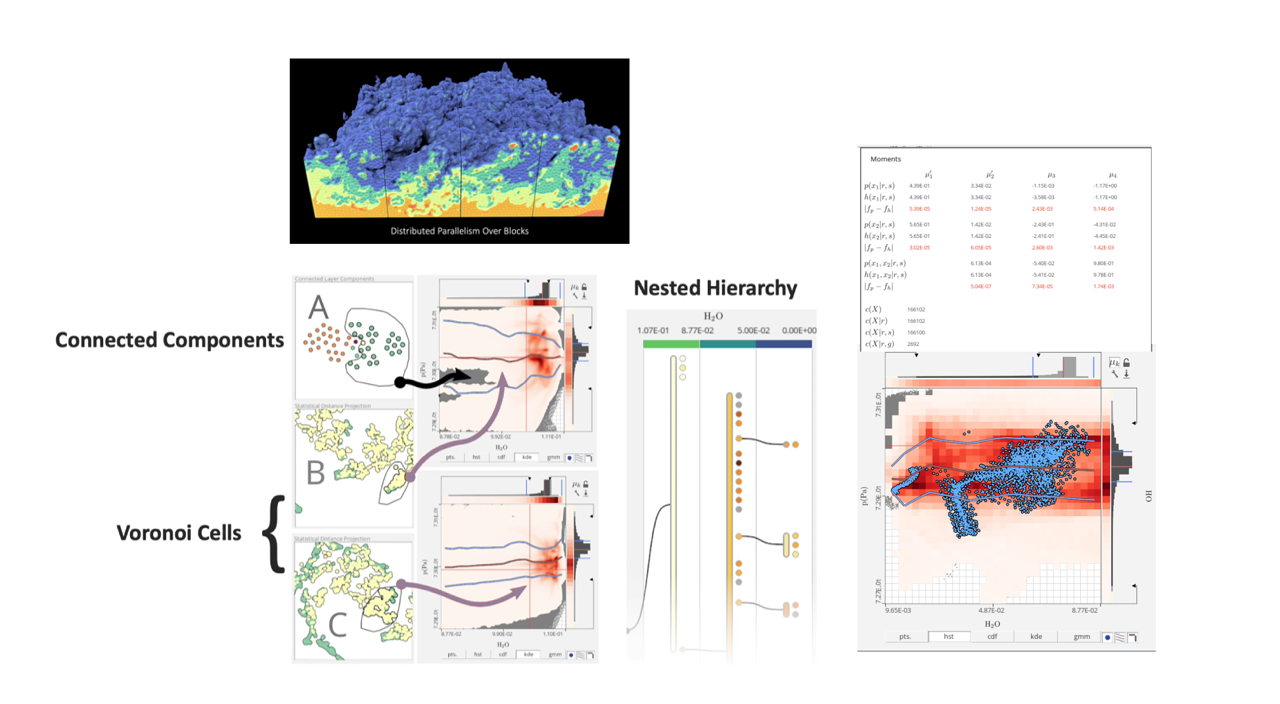Level Set Restricted Voronoi Tessellation for Large scale Spatial Statistical Analysis
Tyson Neuroth, Martin Rieth, Myoungkyu Lee, Konduri Aditya, Jacqueline Chen, Kwan-Liu Ma
View presentation:2022-10-19T19:48:00ZGMT-0600Change your timezone on the schedule page
2022-10-19T19:48:00Z

Prerecorded Talk
The live footage of the talk, including the Q&A, can be viewed on the session page, (Volume) Rendering.
Fast forward
Abstract
Spatial statistical analysis of multivariate volumetric data can be challenging due to scale, complexity, and occlusion. Advances in topological segmentation, feature extraction, and statistical summarization have helped overcome the challenges. This work introduces a new spatial statistical decomposition method based on level sets, connected components, and a novel variation of the restricted centroidal Voronoi tessellation that is better suited for spatial statistical decomposition and parallel efficiency. The resulting data structures organize features into a coherent nested hierarchy to support flexible and efficient out-of-core region-of-interest extraction. Next, we provide an efficient parallel implementation. Finally, an interactive visualization system based on this approach is designed and then applied to turbulent combustion data. The combined approach enables an interactive spatial statistical analysis workflow for large-scale data with a top-down approach through multiple-levels-of-detail that links phase space statistics with spatial features.